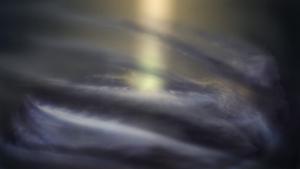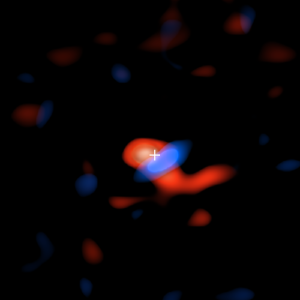Blog
Warm Gas Around
a Black Hole
6 June 2019
 NRAO/AUI/NSF; S. Dagnello
NRAO/AUI/NSF; S. DagnelloThe supermassive black hole in the center of our galaxy is rather sleepy. While active black holes can power high energy jets and powerful beams of radio light, our black hole is in a quiet mode. This, and the fact that we have to peer through thick dust makes it difficult to observe. But recent breakthroughs in radio astronomy are starting to give us a detailed look at our massive neighbor.
 ALMA (ESO/NAOJ/NRAO), E.M. Murchikova; NRAO/AUI/NSF, S. Dagnello
ALMA (ESO/NAOJ/NRAO), E.M. Murchikova; NRAO/AUI/NSF, S. DagnelloOne of the big questions we have about black holes is just how they devour matter and power their jets. Observations have confirmed that there can be superhot accretion disks around black holes, and interactions with strong magnetic field accelerates some surrounding material away from the rotational axis of the black hole. However these observations are for black holes that are millions or billions of light years away. In contrast, we are only 26,000 light years from the center of our galaxy.
Recently, observations from the ALMA observatory have captured light from cool hydrogen gas surrounding the black hole. “Cool” is a relative word, since it has a temperature of about 10,000 K. But this is much cooler than the previously observed hot gas at about 10 million K. The hot gas is so energetic that it surrounds the black hole in a diffuse halo. But the cool (or warm) gas has a ring shape. It also has a rotation to it that ALMA observed by measuring the Doppler shift. It’s the first time this rotation has been observed.
Observing this rotational motion is important, because it helps us understand how the rotation of the black hole affects surrounding gas, and that will help us understand how the gas might be captured by the black hole’s event horizon. By studying this sleepy giant, we can understand more about the most powerful objects in the night sky.